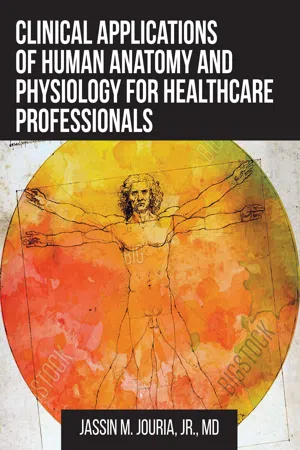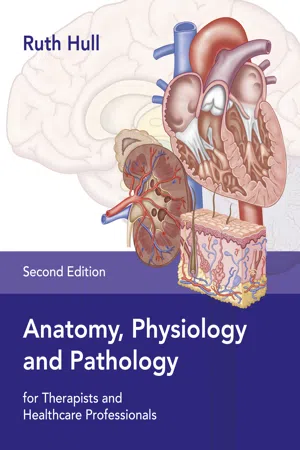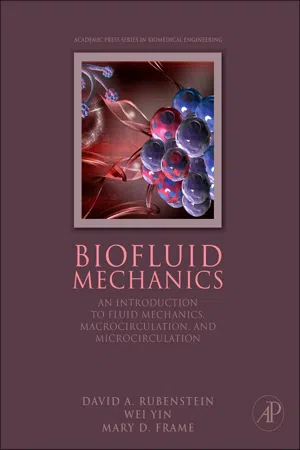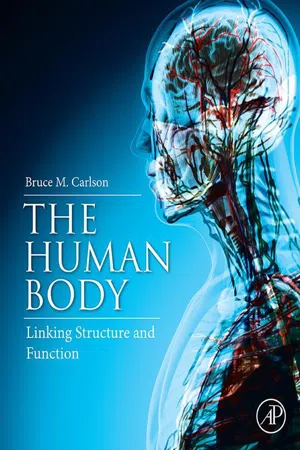Biological Sciences
Lymphatic System
The lymphatic system is a network of tissues and organs that help rid the body of toxins, waste, and other unwanted materials. It also plays a key role in the body's immune system by producing and transporting white blood cells to fight off infections. Lymphatic vessels, lymph nodes, and lymphatic organs such as the spleen and thymus are all part of this system.
Written by Perlego with AI-assistance
Related key terms
Related key terms
1 of 4
Related key terms
1 of 3
10 Key excerpts on "Lymphatic System"
- Jassin M. Jouria(Author)
- 2018(Publication Date)
- BrownWalker Press(Publisher)
The lymphatic and immune systems work together to protect the body against numerous assaults from viral, fungal, bacterial, parasitic, and environmental dangers. For this reason, we’ll be discussing both in this chapter.The Lymphatic System is an immense and extremely complex network of components that includes capillaries, and blood vessels, valves, ducts, nodes, and entire organs not only responsible for the maintenance of internal environments including fluid balances, but protection against internal invaders.The Lymphatic System is also responsible for the production, filtering capabilities, and transportation of lymph and other blood components in the body. It also plays a role in the transportation of proteins, fats and other substances within the blood system.The lymphatic network is capable of restoring approximately 60% of fluids that are filtered from the capillaries and interstitial spaces. This is a process of normal metabolism.1This chapter provides an introduction and brief overview of lymph system function, including how it circulates and filters, and how lymph is interconnected with the immune system. Further exploration of the immune system will provide students with a solid foundation regarding the function of the immune system and the inborn and adaptive types of immunity.- ■ Overview of the Lymph System
In the previous chapter, students learned about blood and its components. In a progressive study of human anatomy and physiology, the inter-connection between the blood and the lymph system is required. While most associate the Lymphatic System as limited to its ability to fight infection, it’s closely linked with the cardiovascular system, and in turn, to blood, bone marrow, and organs and glands such as the spleen and thymus. The connections or network of this combination of vessels and their functions creates an incredibly interwoven network of vessels that perform a huge number of complex functions.In the last chapter, a description of blood and the vascular channels it travels through were introduced. As previously mentioned, blood commonly contacts fluids found outside of vascular walls, in particular with fluids which exit or leak through the thin walls of blood vessels. This contact introduces many of these fluids with tissue cells called lymph.- eBook - ePub
- Ruth Hull(Author)
- 2021(Publication Date)
- Lotus Publishing(Publisher)
10 The Lymphatic and Immune System IntroductionTo understand the importance of a system it sometimes helps to try to imagine your body without it. Imagine what would happen to you if your body could not return excess fluid to the bloodstream. Or if your body had no means of transporting fats and fat-soluble vitamins. Or if you could not defend yourself against invasion from disease. These are sobering thoughts.Although the lymphatic and immune system often appears to be simple, it is of the utmost importance to the health and maintenance of our bodies. In this chapter you will discover more about this system and how it works closely with the cardiovascular system to maintain your health.Student objectives By the end of this chapter you will be able to:• Describe the functions of the lymphatic and immune system• Explain the organisation of the lymphatic and immune system• Identify the location of major lymphatic vessels, nodes and organs• Describe the organs of the lymphatic and immune system• Explain non-specific resistance to disease and immunity.Functions of the Lymphatic and Immune SystemAt first glance, the Lymphatic System does not seem as impressive as some of the other systems of the body. It first appears as a simple system that transports a clear, straw-coloured fluid from the interstitial spaces surrounding cells to the blood. However, on closer examination you see that this system does so much more: it drains interstitial fluid to prevent tissues from becoming waterlogged, transports dietary lipids and protects the body against invasion. - eBook - ePub
- Patricia Barnes-Svarney, Thomas E. Svarney(Authors)
- 2016(Publication Date)
- Visible Ink Press(Publisher)
INTRODUCTION Which branch of medicine deals with the responses of the body to foreign substances?Immunology (from the Latin immunis, meaning “free from services or obligations,” and the Greek ology, meaning “the study of”) is the study of cells and tissues that carry out immune responses.What are the primary functions of the Lymphatic System?The Lymphatic System is responsible for maintaining proper fluid balance in tissues and blood, in addition to its role defending the body against disease-causing agents. The primary functions of the Lymphatic System are: 1) to collect the interstitial fluid that consists of excess water and proteins and return it to the blood; 2) to transport lipids and other nutrients that are unable to enter the bloodstream directly; and 3) to protect the body from foreign cells and microorganisms.What are the three major components of the Lymphatic System?The Lymphatic System consists of the lymphatic vessels, lymph, and lymphoid organs. Together these components form a network that collects and drains most of the fluid that seeps from the bloodstream and accumulates in the space between cells.What are the primary cells of the Lymphatic System?The primary cells of the Lymphatic System are lymphocytes. There are three types of lymphocytes: T cells, B cells, and NK cells. T cells account for approximately 80 percent of the circulating lymphocytes. They are thymus-dependent and are the primary cells that provide cellular immunity. B cells, which are derived from the bone marrow, account for 10 to 15 percent of the circulating lymphocytes. They are responsible for antibody-mediated immunity. NK (natural killer) cells account for the remaining 5 to 10 percent of the circulating lymphocytes. They attack foreign cells, normal cells infected with viruses, and cancer cells that appear in normal tissues. - eBook - ePub
The Book of Lymph
Self-Care Practices to Enhance Immunity, Health, and Beauty
- Lisa Levitt Gainsley(Author)
- 2021(Publication Date)
- Harper(Publisher)
Your Lymphatic System , considered to be your “second” circulatory system, is the sanitation and recycling system of your body. Just as you have two sets of pipes in your home—one set that brings in fresh water and another that removes dirty water—your Lymphatic System is the bonus set of plumbing that filters and removes excess waste from your body. It’s approximately twice as vast as the cardiovascular system, but it doesn’t have a central pump like the heart to move the fluid around. Lymph flows in only one direction: toward your heart. Because it is not propelled by a master pump, its flow relies on the pulsing of nearby arteries, skeletal muscle contractions, and breathing. That’s why self-massage, breath work, and exercise are invaluable to good lymphatic health.Your Lymphatic System plays a number of critical roles in your body. It’s an essential part of the immune system, producing white blood cells with the power to destroy harmful pathogens. It acts as a garbage collector, filtering out bacteria and toxins that can cause disease. It aids the digestive system by absorbing fat and fatty acids from your gut and transporting them back to your bloodstream, making them available as fuel to your cells. And finally, it maintains the fluid balance in your body by collecting, purifying, and draining excess fluids so your tissues don’t swell. We’ll explore all of these valuable roles in more detail shortly, but first, let’s take a closer look at the intricate geography of the Lymphatic System.THE ANATOMY OF THE Lymphatic SystemThroughout your life, your Lymphatic System continuously distributes immune cells across your body. When you look at the map of where your lymph flows, lymph nodes appear like gas stations along the highway of their vessel network. Lymph nodes are where the white blood cells called lymphocytes do their job of eliminating pathogens and harmful substances from the interstitial fluid - eBook - ePub
Biofluid Mechanics
An Introduction to Fluid Mechanics, Macrocirculation, and Microcirculation
- Wei Yin, Mary D. Frame(Authors)
- 2011(Publication Date)
- Academic Press(Publisher)
Close to 100% of the antigens within lymph are removed within the lymph nodes by macrophages that are fixed on the lymph node wall. These macrophages engulf and digest the antigens and then present them to lymphocytes within the node. This acts to initiate an immune response and is a warning system for the rest of the body that an antigen has been found within the blood. When there is a major inflammatory process initiated within the body, these glands become swollen because of an increase in the production of lymphocytes, which act to destroy any invading particles found within the blood. Section 8.3 will discuss in more detail the flow of lymph through the lymph nodes, as well as the rest of the Lymphatic System. The last component of the Lymphatic System, which has not been discussed previously, is the fluid that circulates throughout the Lymphatic System termed lymph. Lymph has a very similar composition to interstitial fluid. One of the primary functions of lymph is to return proteins that have been transported out of the blood vessel or the cells back into the cardiovascular system. In this way, there is a very small loss of protein concentration within the cardiovascular system. Lymph derived from the gastrointestinal system provides a second rapid mechanism for nutrient absorption for any nutrients that do not directly enter the cardiovascular system. The remaining sections of this chapter will discuss how lymph is formed and its path through the Lymphatic System. Lymphocytes are the last component of the Lymphatic System and are specialized cells that can circulate within the blood or the Lymphatic System. Lymphocytes account for approximately 25% of the entire circulating leukocyte cell population. Under normal conditions, only a small portion of the lymphocyte population is circulating throughout the body and the vast majority of these cells are stored in lymphatic tissues/organs. The body contains more than 10 12 lymphocytes - Available until 29 Sep |Learn more
- John Knight, Yamni Nigam, Jayne Cutter(Authors)
- 2020(Publication Date)
- Learning Matters(Publisher)
While on a clinical placement with a district nurse, you visited a 65-year-old gentleman, Mr Jones, who was living with chronic obstructive pulmonary disease (COPD). The visit was to administer the flu vaccine to Mr Jones. He lived with his extended family including his wife, daughter and two grandchildren aged 9 months and 4 years. The family didn’t know much about the vaccine and asked about whether they should be vaccinated too. Where could Mr Jones and his family access advice?There are some possible answers to all activities at the end of the chapter, unless otherwise indicated.Now that we have explored the components of the immune system and the nature of vaccination, we will examine the roles of the Lymphatic System and its overlap with immunity.The Lymphatic System
The Lymphatic System consists of two major components; firstly, a fluid called lymph, which flows around the body within a system of lymphatic capillaries and vessels, and secondly, various glands and organs distributed around the body which contain lymphatic tissue and whose cells are capable of mounting an immune response to pathogens or abnormal cells.Lymph and the lymphatic vessels
Lymph is a milky fluid formed from excess fluid which surrounds the bodies’ tissues (interstitial fluid). Lymph drains into special thin tubes, the lymphatic vessels, which permeate virtually every major organ and tissue (Figure 9.6 ).Figure 9.6 The components of the Lymphatic System and major lymph nodesThe lymphoid glands and organs
These include the spleen, thymus and clusters of lymph nodes (Figure 9.7 ). They have many roles, most notably removal of damaged red blood cells (the spleen), maturation of immune cells (thymus) and trapping of foreign material (lymph nodes and spleen).The Lymphatic System has three major functions: tissue drainage, fat transport and trapping of antigen. For this chapter, only the latter function will be discussed since it forms an integral part of our immune defence system. - eBook - ePub
Immunology
A Short Course
- Richard Coico(Author)
- 2021(Publication Date)
- Wiley-Blackwell(Publisher)
2 CELLS AND TISSUES OF THE IMMUNE SYSTEMINTRODUCTION
The immune system includes a wide variety of cells that function independently and in concert with one another. Chapter 1 introduced the major immune cells derived from lymphoid or myeloid progenitor cells in the bone marrow. In this chapter, we will further define the functional and phenotypic characteristics of these cells. In addition, the major lymphoid organs will be described which include the bone marrow, thymus, lymph nodes, and spleen. Given the coordination required for optimal immune responses to fully manifest, the anatomy of the immune system, including the strategic location of its major organs, is designed to maximize the ability of immune cells to efficiently detect and respond to antigens and to then disperse effector mechanisms throughout the body. A major route of immune cell and antigen transport is the Lymphatic System.THE Lymphatic System
The Lymphatic System is part of the vascular system comprising a network of lymphatic vessels that contain a clear fluid called lymph. Lymph is a fluid similar to plasma and contains lymphocytes, waste products and cellular debris, and, importantly, bacteria and proteins that stimulate immune responses. All interstitial spaces are drained by the Lymphatic System, ensuring that wherever a foreign, potentially infectious pathogen enters the body, it will be swept away and deposited within a draining lymph node where antigen‐presenting cells and antigen‐specific T and B cells can initiate an immune response (Figure 2.1 ).Primary and Secondary Lymphoid Organs
The organs in which lymphocyte maturation, differentiation, and proliferation take place are divided into two categories: primary and secondary organs. The primary or central lymphoid organs are those in which the maturation of B and T lymphocytes into antigen‐recognizing lymphocytes occurs. In other words, these are the organs where gene rearrangements occur to generate functional antigen‐specific BCRs and TCRs expressed by B and T cells, respectively. Mature B cells differentiate to fully mature cells within the bone marrow. Historically, the term “B cell” is derived from developmental studies in birds that demonstrated that antibody‐forming lymphocytes differentiate within an organ unique to birds called the bursa of Fabricius (hence, “B” for bursa). In contrast, T cells differentiate only partially within the bone marrow. Precursor cells destined to become mature T cells undergo final maturation within the thymus gland - Robert L. Maynard, Noel Downes(Authors)
- 2019(Publication Date)
- Academic Press(Publisher)
Chapter 9The Lymphatic System
Introduction
The Lymphatic System has three essential functions:- 1. Production of appropriately programmed lymphocytes that defend the body against infection and destroy abnormal cells including those that have undergone mutation leading to a malignant change.
- 2. Reabsorption of fluid that has passed from blood capillaries into tissue spaces (in man five litres of fluid are returned to the venous system per day).
- 3. Absorption of fat from the small intestine.
Beginning in the tissues, the lymphatic capillaries drain into larger lymphatic vessels with a structure rather similar to that of veins. These large vessels from all parts of the body join to produce two vessels, the thoracic duct and the right lymphatic duct, that pour lymph into the venous system at the root of the neck. The direction of flow is controlled by valves occurring at short intervals in lymphatic vessels. Lymph is propelled through the lymphatic vessels by pressure applied to the vessels by adjacent skeletal muscles, and contraction of smooth muscle in the walls of the larger vessels. Flow may also be aided by the subatmospheric pressure of the tissue around the large lymphatic ducts of the thorax. Lymph hearts are found in amphibians and reptiles, specialised regions of the system that contain much smooth muscle in their walls. No lymph hearts are found in mammals.Lymphatic vessels are interrupted by lymph nodes that filter the lymph and in which lymphocytes multiply. The enlarged lymph nodes that can be felt in patients suffering from infection are an indication of that proliferative response. Nearly all lymph passes through at least one lymph node on its way from the periphery to the venous system, and usually there is more than one lymph node along the pathway.- S. Bradbury(Author)
- 2014(Publication Date)
- Butterworth-Heinemann(Publisher)
CHAPTER 14THE Lymphatic System, THYMUS AND SPLEEN
Publisher Summary
This chapter discusses the Lymphatic System, the thymus, and the spleen. The Lymphatic System consists of a closed series of vessels and lymphoid organs. The lymph vessels, or lymphatics, form a closed series of channels that begin blindly in the tissues. They are lined with an endothelium and eventually lead into larger lymph ducts, which in turn pass the lymph back into the vascular system in the angle between the subclavian vein and the internal jugular vein on each side of the body. Lymph itself is largely derived by transudation from the blood capillaries and contains the same proteins as blood plasma, though in smaller amounts. There is also a higher proportion of albumin to globulin, but the proportion of fibrinogen is lower than that of the plasma. After a meal containing much fat, the lymph that drains from the small intestine contains small fat globules, which may be so numerous that they render the appearance of the lymph turbid. The number of cells in the lymph varies greatly, but they are predominantly small lymphocytes.THE Lymphatic System
The Lymphatic System consists of a closed series of vessels and lymphoid organs. The lymph vessels, or lymphatics as they are usually known, form a closed series of channels which begin blindly in the tissues. They are lined with an endothelium and eventually lead into larger lymph ducts which in turn pass the lymph back into the vascular system in the angle between the subclavian vein and the internal jugular vein on each side of the body. Lymph itself is largely derived by transudation from the blood capillaries and contains the same proteins as blood plasma, though in smaller amounts. There is also a higher proportion of albumin to globulin, but the proportion of fibrinogen is lower than that of plasma. After a meal containing much fat, the lymph which drains from the small intestine contains small fat globules (chylomicrons) which may be so numerous as to render the appearance of the lymph turbid. The number of cells in the lymph varies greatly, but they are predominantly small lymphocytes.- eBook - ePub
The Human Body
Linking Structure and Function
- Bruce M. Carlson, Bruce M. Carlson(Authors)
- 2018(Publication Date)
- Academic Press(Publisher)
Chapter 8The Lymphoid System and Immunity
Abstract
The lymphoid system is a diverse group of cells and organs designed to protect the body from foreign invaders. Innate immunity is a general defense response with an ancient evolutionary origin. Adaptive immunity, a more recent development, involves two defense strategies. The first is cellular immunity, in which T-lymphocytes work with other immune cells to destroy cells that present foreign antigens on their surfaces. Humoral immunity is a function of B-lymphocytes, which secrete antibodies that attack foreign antigens. In a bacterial infection, the microbes are first attacked by immune cells in the periphery, and antigenic fragments are then brought to regional lymph nodes or the spleen for further responses by B cells. Defense against viral infections involves T cells, which recognize foreign antigens on the surfaces of infected cells. The T cells work with killer cells to destroy the infected cells. Similar mechanisms are used in the defense against cancer cells. Hypersensitivity and allergic reactions are a by-product of a system for defense against parasitic worms, and they involve mast cells and the release of histamine.Keywords
Lymphoid system; innate immunity; adaptive immunity; B-lymphocytes; T-lymphocytes; cellular immunity; humoral immunity macrophages; antigen; antibody; killer cells; lymph node; thymus; spleen; dendritic cell; complement; MHC; hypersensitivity; graft rejectionThe human body is engaged in a constant struggle to protect itself from foreign invaders, mainly bacteria, viruses, molds, and parasites. This struggle has a long evolutionary history, and even some of the most primitive animals have developed defenses against such invaders. One of the earliest defense strategies was the development of cells that could phagocytize pathogens. The macrophage represents one of the most ancient of these specialized cell types, but even single-celled amebas engage in phagocytosis. Many of these defense strategies depend upon recognition of a pathogen as something foreign, but those strategies are more generic than specific. It was not until the evolution of vertebrates that a highly sophisticated immune strategy, capable of identifying individual foreign antigens and counteracting them with antibodies, developed. A by-product of this strategy is protection from internally generated cancerous cells.
Index pages curate the most relevant extracts from our library of academic textbooks. They’ve been created using an in-house natural language model (NLM), each adding context and meaning to key research topics.
Explore more topic indexes
Explore more topic indexes
1 of 6
Explore more topic indexes
1 of 4









